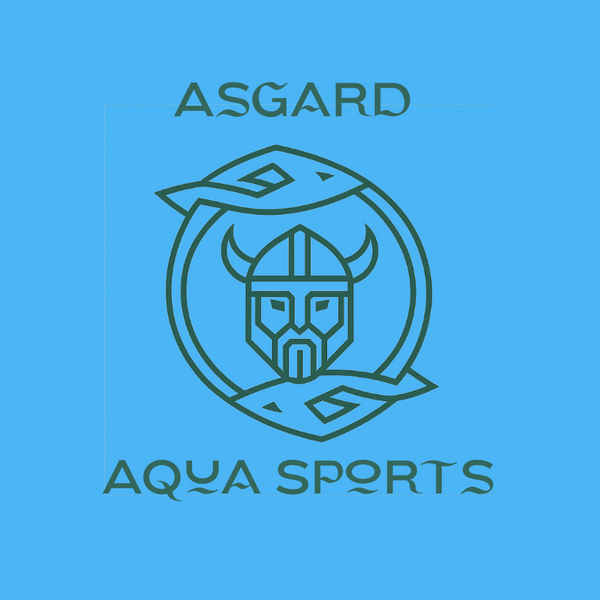The sun is out and the clocks have changed, with Spring in full swing, SUP season is here. Many people will be looking to purchase a SUP board to take in the fresh spring breeze and enjoy longer days in the sun, but may be unfamiliar with the different types of SUPs available to them. In today's blog, we will explore the range of options available and determine which one is best suited for you based on your height, weight and budget.
-
Understanding SUP construction
Many people do not actually know how SUP boards are made and, more importantly, why some paddle boards are priced significantly higher than others. This section will inform you on what materials different paddle boards are made of and how this affects their price and durability.
Drop-stitch technology: the core of your board
The internal structure of a SUP board relies on drop-stitch technology, which uses thousands of threads to connect the top and bottom layers of the kayak together, creating a rigid surface when inflated. The two main types of drop-stitching consist of:
-
Fusion drop-stitching: standard and reliable.
-
Machine weave drop-stitching: tighter, more carefully crafted, allowing an increase in stiffness to the board.
PVC layer
On top of the drop-stitching lies a layer of polymerised Vinyl Chloride Monomer (PVC). Most boards use a double layer of PVC to ensure firmness, allowing a more streamlined experience on the water. The thickness of the PVC plays a role in the overall durability of the board. A thicker layer of PVC increases the durability of the board, allowing it to withstand constant use and exposure to the sun.
Rail Construction
The construction of the side edge of the board, known as ‘the rail’, is more important than meets the eye. Poor rail construction can massively impact both the performance of the board and its durability in the long-term. There are two types of rail construction:
-
Double rail: typically used on premium boards, double rail connects the top and the bottom layers of the board, giving it a more rounded edge, allowing them to hold higher pressures (up to 20 PSI) for enhanced performance due to an increase in stiffness.
-
Single rail: found on budget boards, these rails expose the PVC, reducing the board’s ability to withstand pressure (limited to 11-15 PSI) and making it more susceptible to stretching in the sun, which affects longevity
PSI: the key to performance
Higher pressure equals a stiffer board, which translates to better speed and control. Boards that can hold up to 15-20 PSI are more favourable than lower quality boards that range from 10-15 PSI.
Asgard recommends the Sandbanks Style Pro California iSUP due to the premium triple layer welded rails, with a PSI of 18-20.
-
Finding the right size
Now you know the differences between a high quality board and one of lower quality, it is time to understand what size is best suited to you based on your personal needs.
What length of SUP board should I buy?
The length of your SUP board determines its maneuverability. For example, shorter boards are more maneuverable and allow for quick changes in direction. On the other hand, longer SUP boards track straighter, making them better the more experienced SUP boarder who may enjoy activities such as touring, racing and long distance paddling.
How wide should my SUP board be?
The recommended width of a SUP board varies from person to person based on their height. For example, short paddlers (under 5 '5”) are better suited to a more narrow board because it prevents them from having to lean over the board uncomfortably to optimise their strokes whilst paddling. On the contrary, a wider board is better suited to a taller person due to the balance and comfort that it provides.
How thick should my SUP board be?
The recommended thickness of a paddleboard varies by weight of the paddler. A heavier paddler (above 85kg) is better suited to a thicker paddleboard (approximately 6 inches) because it provides better support and stability, whereas lighter paddlers (under 85kg) are advised to use thinner paddleboards (under 5 inches) to provide the right buoyancy.
-
Additional features to look for
Fin box
A fin box is essentially the spot where the fin is attached to the board. There are many different types of fin box but the most commonly used one is Universal Standard (US). US fin boards come in many sizes ranging from short river fins to touring fins. Boards with US fin boxes are recommended because of the availability of the US fins, meaning if you lose your fin whilst paddling, it is easier to find a replacement.
Price
A higher price does not always equal a better board. Look beyond branding and evaluate materials, construction, and real user reviews. Some premium boards may offer great value for their expert craftsmanship, whilst others may appear flashy but are cheaply made and will not last as long.
Final thoughts
Choosing the right stand-up paddle board is about understanding its structure, dimensions, and features to match your needs. Whether you're after stability, speed, or versatility, making an informed decision ensures that every paddle session is smooth and enjoyable. Happy paddling!

